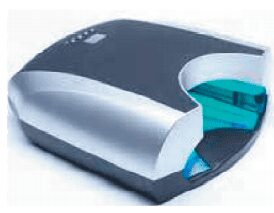
Saturday, May 16, 2015
9:00 a.m. to 2:00 p.m
Sahuarita Town Hall Municipal Complex
(375 W Sahuarita Center Way)
This is a free Public Event
Acceptable items:
All computer equiptment, printers and printer cartridges, TV’s and VCR’s, call phones/chargers, Fax Machines, Cables and cords, CD and DVD Players, Paper for shredding, Cooking Grease and Oil
Automotive batteries, paint, and other hazardous materials WILL NOT BE Accepted. For more infomation, contact J.B Shaw at shaw.joseph@azdeq.gov
2. Weather Is Nice: Time To Hike Or Add A Few Miles To Your Run Or Bike Ride. It is the time of the year when it is just too nice to be inside. Mountain trails and roadways are calling you to get out there.
Once a common denominator to all hikers, runners and bicyclist is sweat. Before long, you have issues with athleths feet and other fungi. One device has been found in a published study to reduce the levels of fungus in test pairs of athletic shoes and leather shoes.
Scientists say further research is needed, particularly trials with humans showing that the devices have an impact in keeping feet free of infections when used over time. Despite a paucity of published data, podiatrists say the devices make a lot of sense, especially when used to prevent recurrence of infection after treatment
“We know that the toe box of the shoe is the breeding ground for fungus, especially in the warmer weather,” when your feet are sweating, says Mark Spier, a Reisterstown, Md., podiatrist who sells the devices in his office to patients who had laser treatments for infected toenails. While Dr. Spier hasn’t done a study, he says he has noticed that recurrence of infection after laser treatments is higher in those who don’t buy the device, or who stop using it.

Ultraviolet devices can be used along with topical antifungals, such as creams widely available for treating athlete’s foot, adds David G. Armstrong, a podiatrist at the University of Arizona in Tucson. The device may be helpful for diabetics who are at risk for infections that could result in amputation, says Dr. Armstrong, director of the Southern Arizona Limb Salvage Alliance, director of the university’s Southern Arizona Limb Salvage Alliance, which seeks to improve diabetic foot care.

Ultraviolet light is an accepted way of killing microorganisms, scientists say. A 2012 study published in the Journal of the American Podiatric Medical Association found the SteriShoe, sold by Shoe Care Innovations Inc., Redwood City, Calif., reduced by 80% the levels of two common fungi that cause athlete’s foot and nail infections. Since only four shoes were tested, reduction in the common fungus T. rubrum wasn’t big enough to be considered statistically significant, meaning the researchers can’t be certain it didn’t occur by chance, according to the publication. But there was a statistically significant reduction in another fungus, T. mentagrophytes.

You can find small UV lights at Amazon for under $10.00 and other inexpensive UV lights that will suite your needs at hardware stores and Lowes and Home Depot. Source:.Wall Street Journal 05/12/15

4. Honeybee Crisis Worsens As Summer Die-Offs Mount. More than 40% of U.S. honeybee colonies died in a 12-month period ending in April, extending a troubling trend that has scientists scrambling for a solution and professional beekeepers struggling to stay in business. The Agriculture Department said in its annual honeybee survey released Wednesday that beekeepers are starting to lose large numbers of bees during both the summer and winter—presenting scientists with a new wrinkle since die-offs had generally occurred during the cold winter months.
“I think the situation is changing,” said Dennis vanEngelsdorp, an expert on honeybees at the University of Maryland. “It remains bad but I don’t know if we can assume the same thing is happening year to year.”

For the first time since the survey began five years ago, the summer loss rates exceeded the winter loss rates, suggesting bees are becoming vulnerable during a time of the year they were thought to be healthy and robust. The most recent summer loss rate reached 27%, up from 20%.
While the precise cause of the honeybee crisis is unknown, scientists generally blame a combination of factors, including poor diets and stress. Some bees die from infestations of the Varroa mite, a bloodsucking parasite that weakens bees and introduces diseases to the hive.
Environmental groups marking the second-highest rate of loss since the Agriculture Department began tracking annual statistics in 2010. The loss rate was up from 34% during the previous 12-month period.
Bee deaths present a considerable challenge to professional beekeepers, who spend substantial amounts of time and money to replenish their colonies. Many beekeepers, already in their 50s and 60s, are considering early retirement or are being forced out of the business due to the expense.
Beekeepers have said they start to feel a financial pinch once annual loss rates rise above 19%.
“It’s just tough because [high loss rates] seem like the new norm today,” said Blake Shook, owner of Desert Creek Honey in Texas. “And that’s challenging because it’s not sustainable.”
A dwindling supply of beekeepers is problematic for the agriculture industry, which relies on honeybees to pollinate more than $15 billion of crops each year. Almond growers in California, already dealing with the state’s crippling drought, rely almost exclusively on honeybees for pollination.
“If beekeepers are going to meet the growing demand for pollination services, researchers need to find better answers to the host of stresses that lead to both winter and summer colony losses,” said Jeff Pettis, an entomologist at the Agriculture Department’s bee research lab. The White House created a task force last year to study ways to prevent honeybee losses. It is expected to issue a national plan in coming weeks. Source: http://www.wsj.com/articles/over-40-of-honeybee-colonies-died-in-year-usda-says-1431531544
5. Drought’s Extremes Tallied at Record-Low Lake Mead. Gail Kaiser has spent much of her life here on Lake Mead, with its crystal blue water pouring into canyons and splintering off like blood vessels into coves and bays, forming the vast reservoir that stretches into two states.
She was just a child when, in 1957, her father took over the marina that has stayed in her family’s hands ever since. The lake, which is part of the Colorado River system and feeds into the Hoover Dam, was designed to fluctuate like a giant bathtub. In her life, she has seen it at its fullest, in the early 1980s, as water gushed over the spillways at the dam. .

But more recently, as the area has been in a drought for most of the last 15 years, she has seen the water creep away, with a chalky ring on the lake’s rocky edges marking the heights it once reached. The longtime home of the marina has mostly dried up, forcing a move several years ago to a site 12 miles away. And on a recent morning, crews went to work on the elaborate process, requiring weeks of preparation and costing over $100,000, to ease the marina — with its boat slips, shop and offices — farther out into water.
When it is full, the reservoir, a few dozen miles from the Las Vegas Strip, reaches an elevation of more than 1,220 feet. But last week, Lake Mead broke records, falling to about 1,079 feet, lows not seen since the lake was created in the 1930s. The lake is at only 38 percent of its capacity, and officials warn that the water level will continue to fall throughout the summer, with projections showing an estimated elevation of 1,073 feet by September.
“This is a pretty severe, lengthy drought, and it’s taking its toll,” said Rose Davis, a spokeswoman for the United States Bureau of Reclamation’s Lower Colorado Region.
The Colorado River system directs water to states throughout the region and into Mexico, but years of drought have raised concerns about its sustainability.
Projections show the lake returning to 1,080 feet by the start of next year, but if the water does not rise above 1,075 feet by January, officials will be forced to reduce the amount of the water delivered to Arizona and Nevada. And researchers fear that the drought conditions could linger for years, sharply reducing the snowpack in the north that replenishes the river.
“The Southwest sits in a kind of bull’s-eye of continued warming,” said Thomas C. Piechota, a professor of civil and environmental engineering at the University of Nevada, Las Vegas. “We’ve seen this warming over the last 20 years.”
Some researchers argue that the demands on the lake as a water source leave little flexibility for restoring its supply. Source: http://www.nytimes.com/2015/05/05/us/droughts-extremes-can-be-measured-at-recordlow-lake-mead.html?_r=2
6. Arizona Farmers Prepare For CAP Water Shortage. Dan Thelander, who grows alfalfa, wheat, cotton and other crops on 5,000 acres here, already has seen his irrigation district give up 20 percent of its Central Arizona Project water under an agreement Arizona negotiated to help support the level of Lake Mead.
But with the Interior Department expected to declare a shortage on the Colorado River in the not-too-distant future, he and other central Arizona farmers face a tougher scenario: A shortage would trigger a first round of cuts to the state’s CAP allotment, and those cuts would fall in large part on agriculture.
“It’s a big concern because this is something we can do very little to control,” Thelander said
The CAP aqueduct brings about 1.5 million acre-feet of Colorado River water per year to Pima, Pinal and Maricopa counties, and much of that is used for agriculture. According to the Arizona Department of Water Resources, irrigated agriculture uses nearly 70 percent of available water.

Brian Betcher, general manager of the Maricopa-Stanfi eld Irrigation & Drainage District, said farms he works with are looking at about a 60 percent reduction in CAP water. Though he expects farms to boost pumping groundwater to which they are entitled by 25 percent, Betcher said that in a shortage farmers would need to change their operations.
“They have to live with less water or reduce cropping. That will be their challenge,” he said. Farmers have been preparing for potential water cuts for years by converting from fl ood irrigation to drip irrigation and sprinkler systems.
Of Thelander’s 5,000 acres, 1,000 have been converted to a drip irrigation system that saves about an acre-foot of water per acre. Installing drip irrigation on the whole farm would cost about $10 million, something Thelander said is just too expensive
If forced to make do with even less water, Thelander said he would have to farm fewer acres while still facing expenses for land he wouldn’t be able to farm. “If the price of alfalfa is good, then as a farmer I may grow it still,” he said. “I just won’t grow as many acres.”
The odds of a shortage in water deliveries to Arizona and other Lower Colorado River Basin states in 2016 are now 33 percent, the U.S. Bureau of Reclamation said this week. By 2017, the odds rise to 75 percent.
The CAP is offering financial incentives to encourage farmers to reduce their usage, said Chuck Cullom, the CAP’s Colorado River programs manager. The CAP reduces farmers’ payments for CAP water for every acre-foot that they cut back on water, which acts as a credit against their CAP bills.
“We are basically paying them to reduce their use of CAP water,” Cullom said. Farmers need to do two things to prepare for cutbacks: change their operations and crop mix, and reduce acreage, said Joe Sigg, director of government relations for Arizona Farm Bureau. Source: http://tucson.com/ business/local/arizona-farmers-prepare-for-cap-water-shortage/article_a9037ae1-1620-54bc-8090-1d22bcf958b9.html
